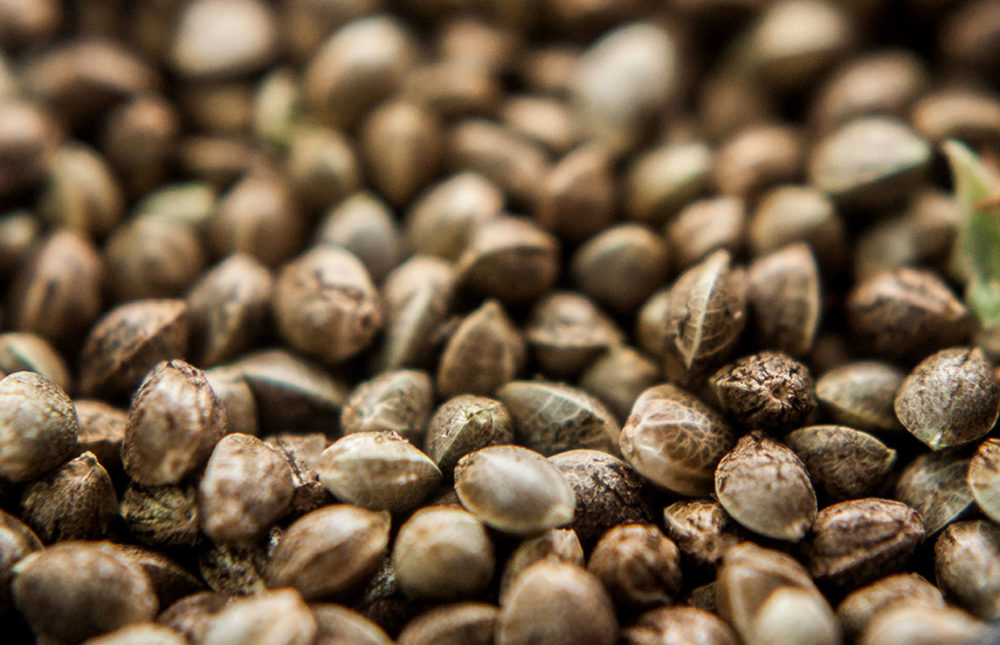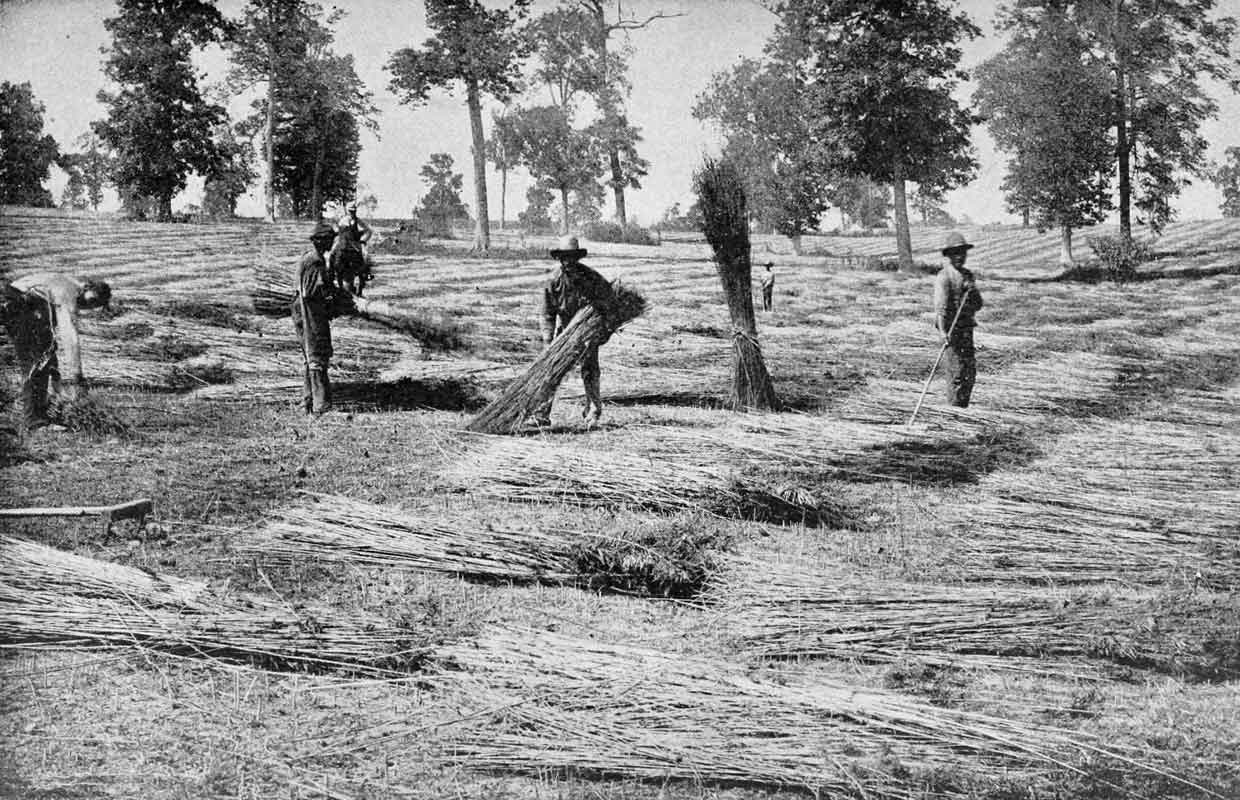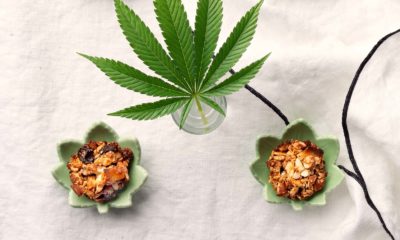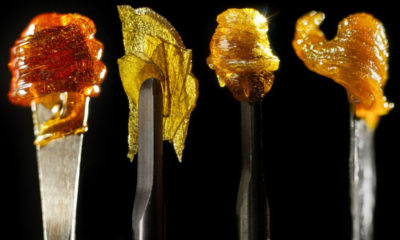
Culture
Growing Pot is Your Patriotic Duty
Clammy mists clung bitterly to the rolling hills of a brisk autumn morning, but the panting grower ignored them as he hurried on. His employer, one of the top cannabis growers in the region, would be devastated by the news the man so hurriedly carried that crisp fall morning, but he was also a man who should not be kept waiting. In an unfortunate turn of events, this dutiful gardener had learned that an unaccounted male plant had popped off, pollinating an entire field of sinsemilla in the process. This grower didn’t think his employer would be pleased.
It’s a scene that could have occurred countless times in the U.S., in any state or during any year. This particular occasion, however, would prove historic. Indeed, modern historians know about the incident because of the personal diary of the man’s employer, a very imminent farmer of his time, written in 1765: the diary of George Washington.
These days, standard history textbooks no longer mention that the man who would go on to become the first president of the United States began his career as a “gentleman” farmer of some of Virginia Colony’s top cash crops, including cannabis. The fact is hardly controversial; Washington wrote extensively about his cannabis crop in his own handwriting – especially in the period before the Revolutionary War when his career was primarily focused on cash crop agriculture. The entry dated Aug. 7, 1765, in which the future president bemoans the fact that he began to “separate the male and female plants… rather too late” has been the focus of much debate.
Not much doubt exists as to what kind of “male and female plants” Washington referred to, because the same journal includes another entry later that same August in which he reflects that he had “pull[ed] up the [male] hemp. Was too late for the blossom hemp by three weeks or a month.” Rather, the controversy is over what strain of cannabis the Founding Father was trying to grow, what exactly he meant by “hemp” and “blossom hemp,” and above all why he was so bummed out that he hadn’t pulled his males in time.

An 1800’s photograph shows workers harvesting a hemp field, when industrial hemp was thriving in the United States.
Some historians acknowledge that Washington grew cannabis but maintain that he exclusively grew pure Sativa strains imported from northern or eastern Europe — a variety which, even in the 18th Century, would have yielded strong fibers but very little medical effect. To make their case, they point out that the economy of Virginia Colony, in general, was dominated by the cultivation of cannabis strains for industrial purposes like rope, sails and textiles. And indeed, Washington’s own agricultural records from Mount Vernon confirm that the production of industrial hemp was a core pillar of his operations.
But some historians go further than that, pointing to entries in Washington’s records that seemingly cannot be explained by the standard narrative. One provocative clue — Washington’s oblique reference to “blossom hemp” — stands out in particular. The curious reference, so incongruous in a time in which the majority of hemp farmers concerned themselves exclusively with the plant’s fibers, begs the question of what interest Washington could have had in his plants’ flowers. It could be that the future president was breeding for seed, as many farmers of his time did. But if that is the case, why did he bemoan the fact that he separated his males and females “too late”? Such an entry suggests the opposite of the seed theory — that in fact, George Washington was trying to grow sinsemilla.
Thus, while many have claimed that Washington’s only interest in “hemp” was for its valuable fibers, the historical record suggests he, like many early Americans, took a broader view. In fact, the first president apparently saw the plant’s diversity of uses as one of its most valuable virtues.
An Incomplete Independence
The point was quickly proved, because only a few years later the fledgling colonies began using the power of hemp in their war for independence from the British Crown. Hemp textiles provided clothing and outfitting for Colonial troops; hemp sails helped American privateers run the British blockade designed to starve Washington’s army of needed supplies. Tradition holds that even the first American flag, used to rally those troops against foreign occupiers, was woven from hemp. Thus, the cannabis cultivation of George Washington and so many others transformed from a vital economic activity to an urgently patriotic act.
Nor was Washington alone among the Founding Fathers in his admiration for the crop.
“When President Thomas Jefferson wrote (March 16, 1791) that hemp ‘is of first necessity to the commerce and marine, in other words to the wealth and protection of the country,’ his words were prescient,” says Chris Conrad, author of “Hemp: Lifeline to the Future.”
Conrad, who also edited the seminal hemp history “The Emperor Wears No Clothes” and curated museums on hemp history in both Oakland, Calif. and Amsterdam, has devoted a significant portion of his career to understanding the prodigious plant’s past, yet his greatest concern today is for the hemp industry’s future. And not without good reason: almost 225 years after Jefferson’s famous words, the American hemp industry is suppressed and true American independence remains elusive.
The first century of the nation’s history saw vast economic expansion, but it came at the expense of slavery — wages stolen, not earned. The second century, too, was characterized by astonishing financial growth (punctuated by regular financial crises) — but these gains, taken at gunpoint from indigenous tribes and global empire, were likewise ill-gotten. Over the past 50 years, the American economy has been strong — but at the cost of massive imports of oil from the Middle East, unsustainable environmental practices and mounting household bills which threaten to squeeze the American dream out of reach.
“It’s been very strange working on behalf of hemp reform over the past 25 years,” says Conrad. “It begins with a legal conundrum because industrial hemp is not a drug, it’s agriculture — a farm crop — and the laws against hemp are irrational and anti-American, in the sense that they are designed to favor and corporations that are environmentally destructive over sustainability for the nation or designed to generate corporate profits from criminal policies which suppress personal freedom — or both. Unfortunately, many of the environmental and social harms that I predicted in ‘Hemp: Lifeline to the Future’ — desertification, water pollution, atmospheric contamination, loss of topsoil — have continued unabated as family farms and small businesses have suffered to subsidize the industries that have flourished thanks to the Drug War. We should have made the transition back to a healthy hemp economy decades ago, yet this year is the first time that Congress has even authorized research crops here in the U.S., let alone the kind of national and international hemp development policies that are critical to restoring our economy and society to a pro-survival and pro-citizenry stance.”
Faced with an unfinished battle for independence, suppressed under the thumb of a government opposed to freedom, a select few Americans have taken up the same weapon that our Founding Fathers used: cannabis.
“I believe America’s economic problems started,” says Ryan Loflin, “as soon as we outlawed hemp farming. We stopped one of the greatest economic booms before it ever happened.”
Loflin, a clean-cut father of two from Crested Butte, Colo., espouses a view held by millions of Americans — and yet very few have gone so far as he has to put their money where their mouth is. In June of 2013, he crossed the principal Rubicon of his life and sowed 60 acres of his family alfalfa farm with industrial hemp — enough to make him, under outdated federal laws, a felonious kingpin trafficking in a Schedule I crop. The harvest came in last October — the first large industrial hemp harvest in the United States since 1958, when the last Wisconsin farm folded under federal persecution.
Loflin typifies the word “patriot” in one of its oldest senses: just as the patriots who pillaged crates of overtaxed tea at the historic Boston Tea Party risked the consequences of defying unjust laws to make a political point, so did Loflin plant his fields of cannabis in defiance of indefensible clauses in the federal Controlled Substances Act which still, as of this printing, prohibit the cultivation of industrial hemp by private individuals. The latest farm bill, signed by President Obama in 2013, allows universities to grow industrial hemp, but only for research purposes.
Even though not a single one of his plants is capable of causing any high, federal law would still subject him to extreme prison sentences under archaic sentencing guidelines based on the number of cannabis plants, regardless of variety. Indeed, the DEA has occasionally destroyed up to 500 million plants of the variety ruderalis — AKA “ditchweed” — in a single year, as a convenient way to inflate its numbers in Congressional reports. The fact that such sentencing guidelines defy all common sense don’t shield Loflin from the threat of arrest and imprisonment, however. The only thing doing that is the heretofore unwillingness of the federal justice system to file charges. And that could change tomorrow.
Yet Loflin, who has yet to face any charges for his actions, sees the risk to his freedom as minor compared to the criminal hoodwinking of the American people that led to the prohibition of industrial hemp, an event which he calls “not an accident. A small, very greedy, wealthy group of Americans filled their pockets instead of helping our country.”
The historical record agrees with Loflin’s assessment. Although American public opinion was thoroughly against intoxicating strains of cannabis — swayed by propaganda films like “Reefer Madness” and the reliably racist talking points of the nation’s first drug czar, Harry Anslinger — no outcry by the American people was ever raised against any U.S. variety of industrial hemp. It already grew in countless innocuous acres in states like Kentucky and Wisconsin and became so intertwined with the U.S. economy that it came to be known as Cannabis Americana. Indeed, as a late-1930s Popular Mechanics article made famous by historian Jack Herer points out, hemp was on the verge of becoming the next “billion-dollar crop,” already responsible at such an early date for over 25,000 industrial and consumer products. Yet the best was still to come, as early experiments at the Ford Motor Company showed that the domestic automotive industry could work hand in hand with small family farms, sourcing industrial hemp to make both the chassis and even the fuel of a new “hemp car” built out of renewable products which literally spring from the ground.
Against a backdrop of such economic promise, the actions of Loflin’s “small, very greedy” group stand out as especially suspicious. Transcripts of meetings called by Anslinger to hash out the details of the new federal Marihuana Tax Act of 1937 clearly show that the group was aware that their proposed language would criminalize an industry which made many useful products; nevertheless, Anslinger was adamant that no cultivation of any variety of cannabis could be allowed. Despite strenuous objections from industry and the American Medical Association, Congress passed the Act in an 11th-hour session, bringing over 300 years of continuous American hemp farming to a violent, crashing halt.
Cannabis may be an annual plant, but the industry is perennial. Despite the best efforts of Anslinger and his ilk, farmers like Loflin have kept one of the most quintessentially American activities alive, by sowing the industrial strains favored by Thomas Jefferson and George Washington. Ryan Loflin could do nothing else.
Finally, a Sustainable Future
Despite the brave efforts of these patriots, the United States is falling behind. The U.S. market for hemp products is one of the largest in the world, but American hemp production lags far behind that of China and Canada, the world’s top two producers. Although hemp ethanol presents the opportunity to wean American cars off Middle Eastern oil, the U.S. still lags far behind Brazil in the production of such fossil fuel-free alternatives. And even though American schools lead the world in most medical research, in the realm of medical cannabis research the U.S. has far to go before it catches up with the pioneering work of Great Britain-based GW Pharmaceuticals and Israel’s medical cannabis research program, which has produced more patents for medical marijuana than any other institute on Earth.
Clearly, we have work to do. To complete, finally, the long struggle for independence for which our Founding Fathers fought and died, all Americans must rally around the effort to rebuild the industry which proved so vital in building the country in the first place: cannabis. Just as hemp provided the sailcloth and rope necessary to facilitate trade between the early colonies in the 18th century, so can it fulfill the same function today – by replacing the nation’s dependent relationship on foreign petroleum producers with ethanol from the homegrown annual harvest. Just as tincture from Cannabis Americana provided early Americans with the medicines they needed from their nation’s own heartland, so can the hybrid strains of today stave off the nation’s coming health crisis by helping to prevent crippling diseases like diabetes, arthritis and cancer. From paper to textiles to high-grade industrial lubricants, cannabis can provide thousands of products America needs – but only if the American people make it happen.
“My concern,” says Conrad, “is the timidity with which the government’s roll out of hemp agriculture will seek to slow down mass production and progress rather than stimulate growth. It’s taken 20 years since the states first began to pass laws enabling hemp cultivation, and here we are with the federal government just now catching up to allow research crops. In the meantime, continued reliance on the old economy of fossil fuels and non-sustainable agriculture has continued to degrade the environment. What we need is a large scale industrial development project along the lines of the Manhattan Project or the Space Race in the race to put society back on a sustainable footing.”

Photo Arby Reed
Conrad cautions against any unplanned, headlong rush to pre-prohibition days.
“The initial roll-out of product development,” he prescribes, “should be the seedlines for the changing climate and economic projects that require the least processing from field to finished product — such as genetic development, seeds and seed oil products, soil remediation and other horticultural uses, hempcrete, onsite pulping and extrusion equipment for prototype products, maybe through 3-D printers, and so on. You don’t want to get bogged down in transportation and large-scale production until the production levels soar and economy of scale kicks in. That way we can intelligently develop the crops and products side by side for maximum economic and environmental benefit. Remember that the hemp industries have essentially been robbed of almost 80 years of engineering and commercial development. They need to be reintroduced and to grow in a planned but organic process.”
That, in a hempseed, is Ryan Loflin’s plan. At the end of another hard day working to revive the seed-line that changed the world history — Cannabis Americana — Loflin turns back toward home.
“For me,” he explains, “being a patriot means standing up for what you believe in and fighting for a greater cause. We can get our country back on track, and put thousands of Americans back to work. Hemp farming will do this. I believe it is our only way.”
His gaze sweeps his hemp fields, bending with the weight of new seeds, past the wind turbine turning humming rapid swirls against a vermillion sunset and toward an uncertain future.
Originally published in the print edition of Cannabis Now. LEARN MORE
TELL US, would you think industrial hemp can help restore our economy?
























